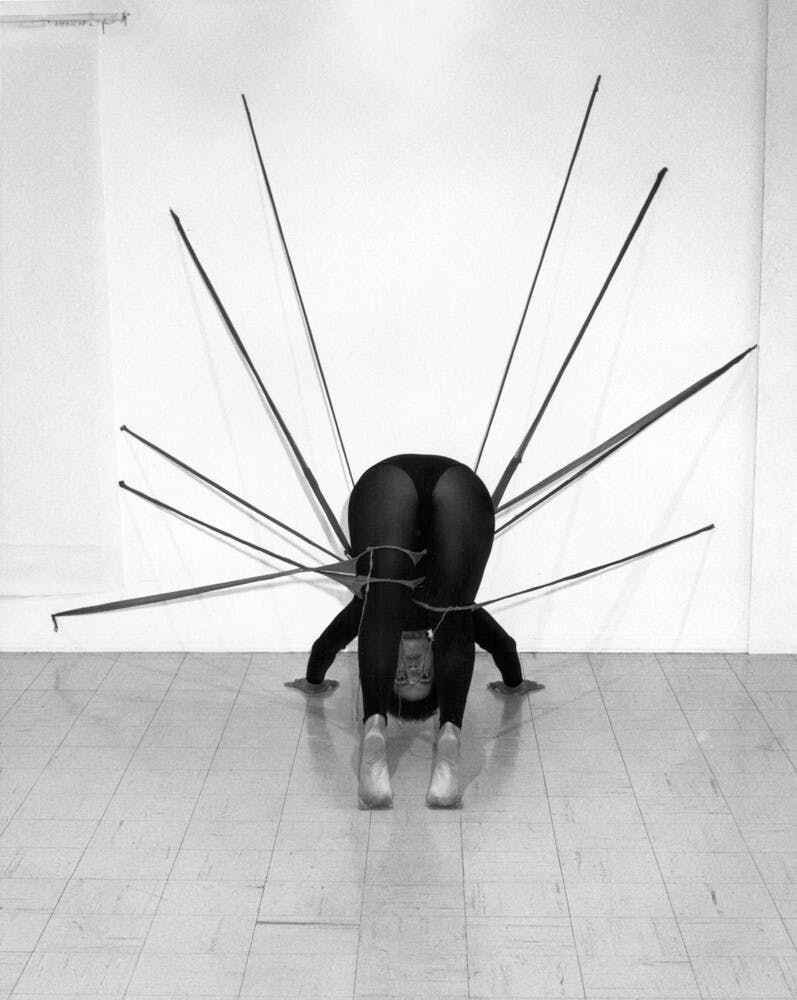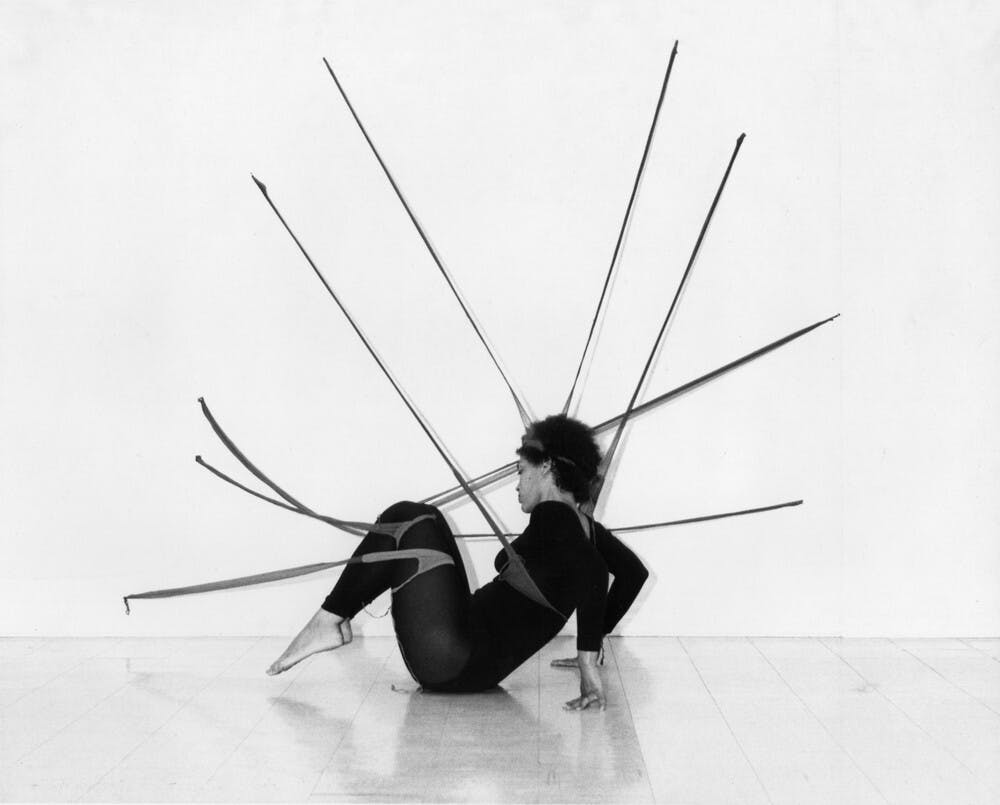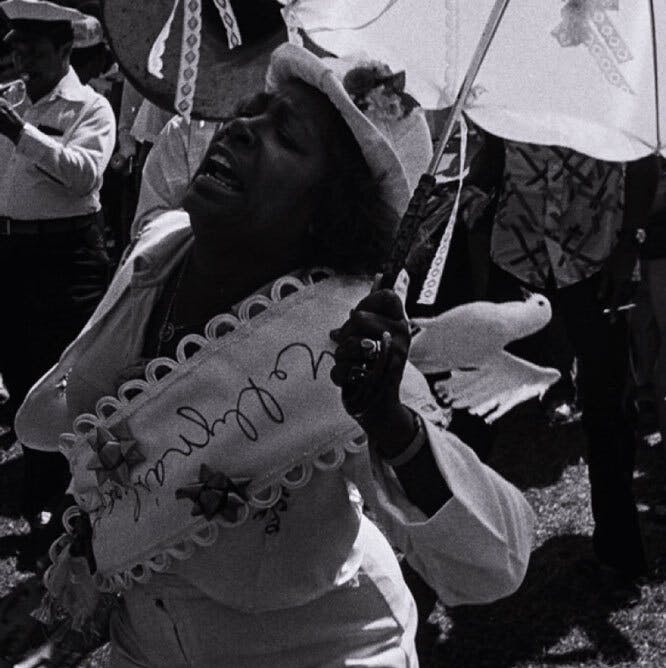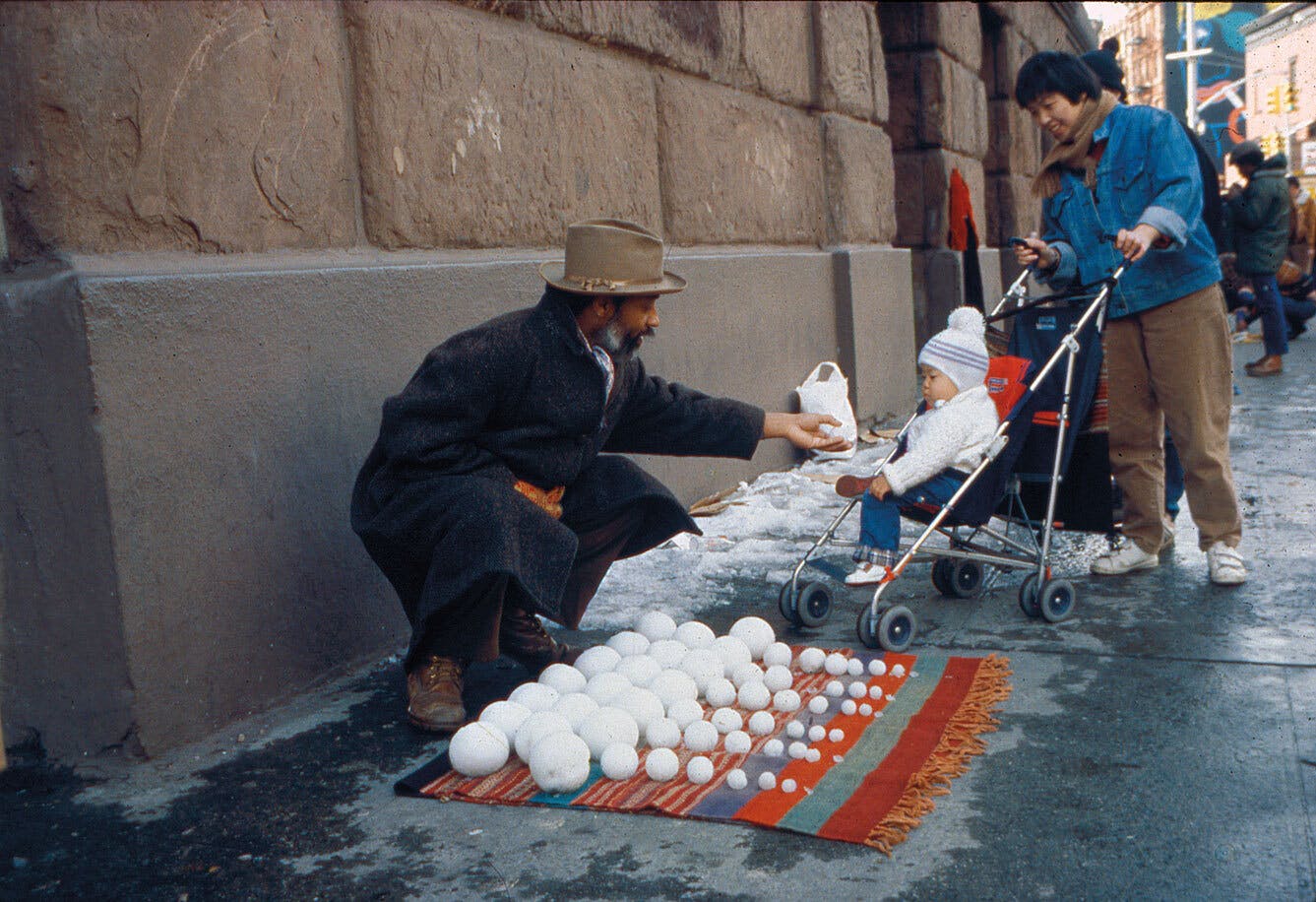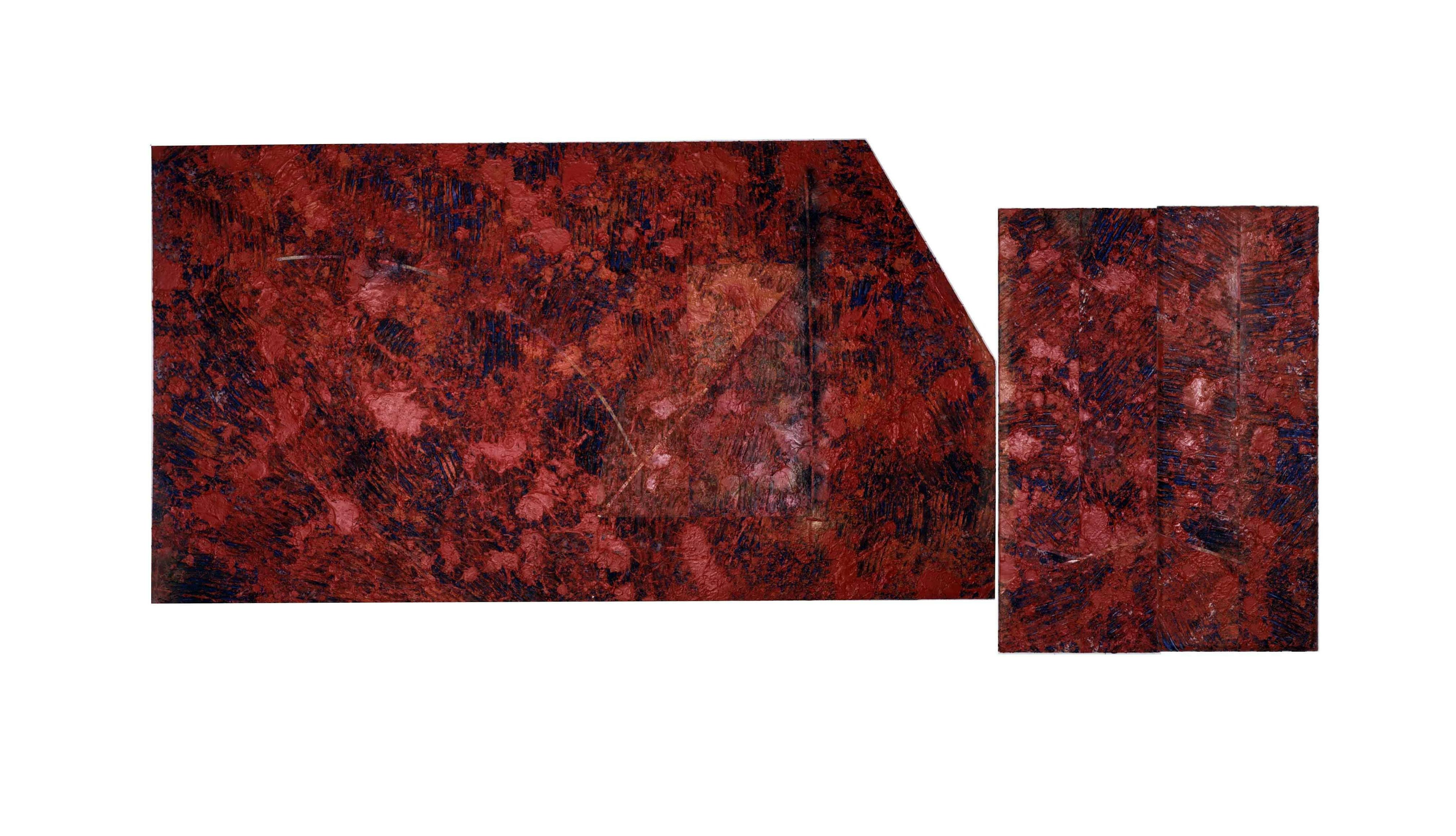Senga Nengudi
(b. 1943)Senga Nengudi combines sculpture, dance, and installation to explore notions of agency, fragility, and resilience.
Biography
As a child, Nengudi took ballet and modern dance classes, and admired the work of Katherine Dunham and Fred Astaire. After electing to pursue art rather than dance, she had formative experiences as a volunteer at the Watts Towers Art Center and as a teaching assistant at the Norton Simon Museum (then the Pasadena Art Museum). Upon receiving her master’s degree in sculpture, she moved to East Harlem and spent the ensuing years splitting time between New York and Los Angeles, swapping studio space with fellow artist David Hammons.
In the 1970s, Nengudi participated in Studio Z, a Los Angeles–based collective of artists, such as Hammons and Maren Hassinger, who explored discarded materials and neglected spaces. Soon after the birth of her son in 1974, she introduced pantyhose as her primary medium, stretching the material across walls and onto the floor, alluding to the endurance of the female body in its physical transformations. She often invited a collaborator—frequently Hassinger—to activate the works through movement. Since then, Nengudi has experimented with everyday materials, such as vinyl tubes and rope, imbuing each with a bodily presence and calling into question conventional understandings of the human form. Her early interest in dance and performance informs her approach: she does not seek to create objects that will last forever, but rather “to create an experience that will vibrate with the connecting thread.”1
Nengudi earned a BA and MA from California State University, Los Angeles. In between these degrees, she spent a year studying at Waseda University in Tokyo, Japan. She is the recipient of awards such as the Anonymous Was A Woman Award (2005); the Lifetime Achievement Award from the Women’s Caucus for the Arts (2010); and the Nasher Prize (2023). The Studio Museum has presented her work in exhibitions such as R.S.V.P.: Senga Nengudi with a Response from Rashawn Griffin (2008); VideoStudio: Playback (2011); and Circa 1970 (2016).
1) “Senga Nengudi Wins $100,000 Nasher Prize for Sculpture,” Artforum, September 21, 2022,
Exhibitions and Events
Senga Nengudi
(b. 1943)Senga Nengudi combines sculpture, dance, and installation to explore notions of agency, fragility, and resilience.
Performance Piece, 1978
Biography
As a child, Nengudi took ballet and modern dance classes, and admired the work of Katherine Dunham and Fred Astaire. After electing to pursue art rather than dance, she had formative experiences as a volunteer at the Watts Towers Art Center and as a teaching assistant at the Norton Simon Museum (then the Pasadena Art Museum). Upon receiving her master’s degree in sculpture, she moved to East Harlem and spent the ensuing years splitting time between New York and Los Angeles, swapping studio space with fellow artist David Hammons.
In the 1970s, Nengudi participated in Studio Z, a Los Angeles–based collective of artists, such as Hammons and Maren Hassinger, who explored discarded materials and neglected spaces. Soon after the birth of her son in 1974, she introduced pantyhose as her primary medium, stretching the material across walls and onto the floor, alluding to the endurance of the female body in its physical transformations. She often invited a collaborator—frequently Hassinger—to activate the works through movement. Since then, Nengudi has experimented with everyday materials, such as vinyl tubes and rope, imbuing each with a bodily presence and calling into question conventional understandings of the human form. Her early interest in dance and performance informs her approach: she does not seek to create objects that will last forever, but rather “to create an experience that will vibrate with the connecting thread.”1
Nengudi earned a BA and MA from California State University, Los Angeles. In between these degrees, she spent a year studying at Waseda University in Tokyo, Japan. She is the recipient of awards such as the Anonymous Was A Woman Award (2005); the Lifetime Achievement Award from the Women’s Caucus for the Arts (2010); and the Nasher Prize (2023). The Studio Museum has presented her work in exhibitions such as R.S.V.P.: Senga Nengudi with a Response from Rashawn Griffin (2008); VideoStudio: Playback (2011); and Circa 1970 (2016).
1) “Senga Nengudi Wins $100,000 Nasher Prize for Sculpture,” Artforum, September 21, 2022,
